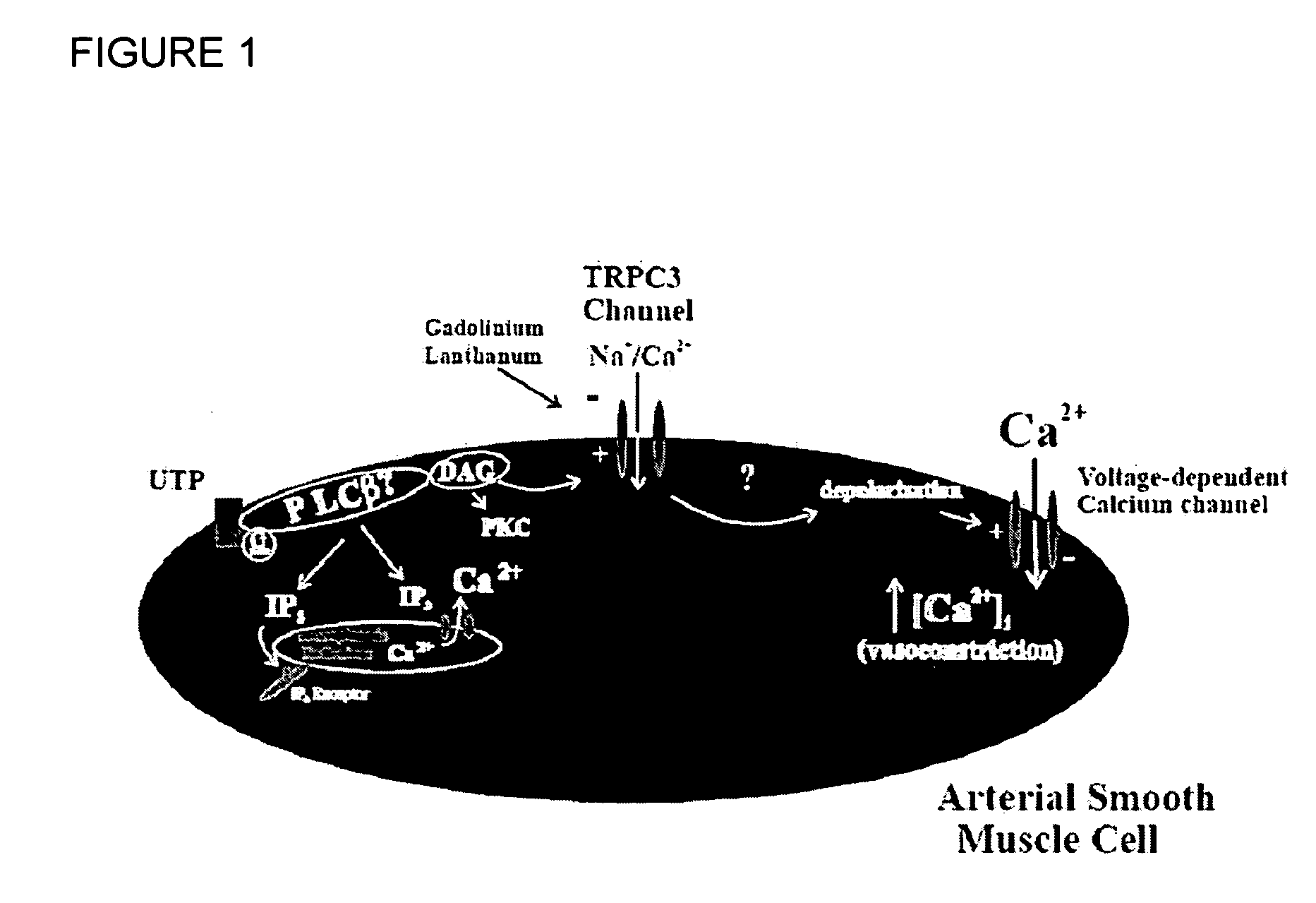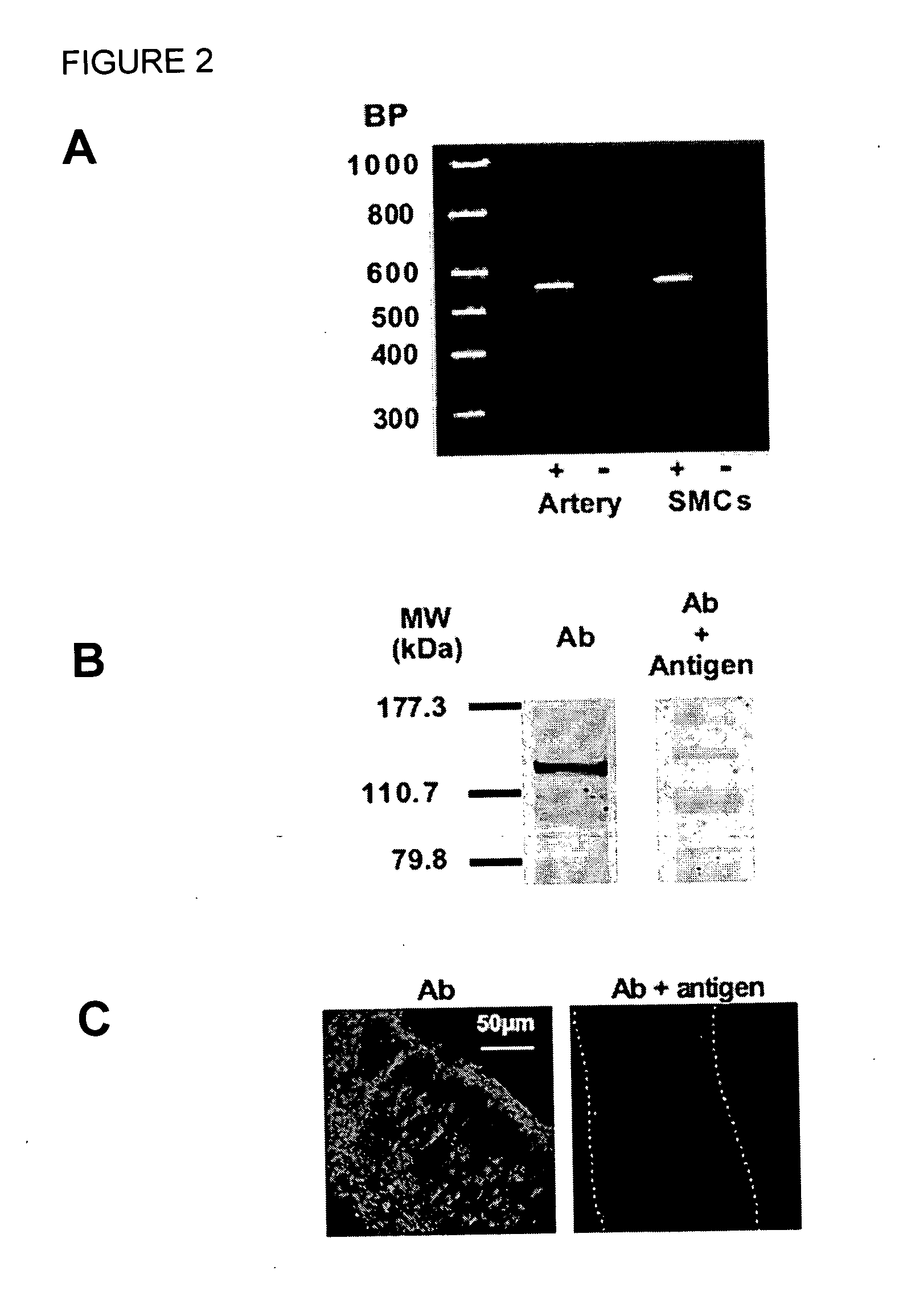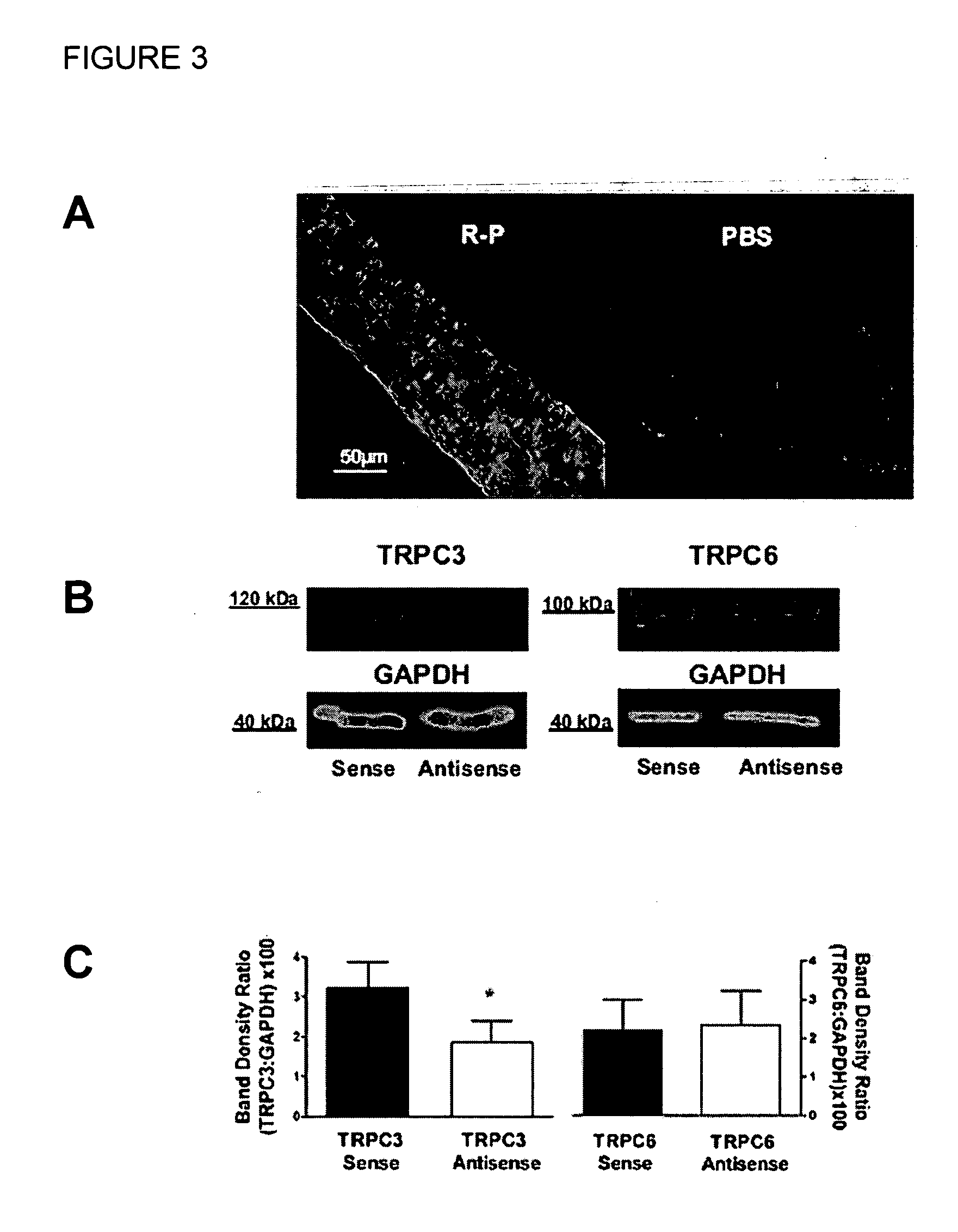Methods and products for treating hypertension by modulation of TRPC3 channel activity
a technology of trpc3 channel and inhibitor, which is applied in the direction of biocide, heterocyclic compound active ingredients, genetic material ingredients, etc., can solve the problem that the role of trpc3 channels in native vascular smcs has not been established, and achieve the effect of suppressing trpc3 expression
- Summary
- Abstract
- Description
- Claims
- Application Information
AI Technical Summary
Benefits of technology
Problems solved by technology
Method used
Image
Examples
example 1
[0158] Expression of TRPC3 in rat cerebral arteries. RT-PCR was used to determine if mammalian TRPC3 mRNA transcripts were expressed in cerebral arteries of adult male rats. Messenger RNA for TRPC3 was identified in intact cerebral arteries as well as in smooth muscle cells isolated from these arteries (FIG. 2A). Western analysis of arterial homogenates detected a protein band of approximately 120 kDa that was not detected when the TRPC3 antibody was pre-absorbed with the peptide antigen (FIG. 2B). Immunofluorescent labeling of intact cerebral arteries revealed a circumferential staining pattern for TRPC3 consistent with localization of TRPC3 to the arterial smooth muscle (FIG. 2C).
example 2
[0159] Suppression of TRPC3 expression in cerebral artery. An antisense oligodeoxynucleotide (ODN) approach was employed that has been successfully used in previous studies to reduce TRPC6 channel expression and function (Welsh et al 2002 Circ Res 90, 248-250). In the present Example, it was found that TRPC3 antisense ODNs decreased the expression of TRPC3 when compared to sense-treated arteries. Fluoroscein-labeled ODNs were taken up by cerebral arterial SMC's and the uptake was significantly enhanced by reversibly-permeablizing the arteries (FIG. 3A). Western analysis showed that anti-sense treatment had no effect on the expression of GAPDH but reduced the density of the TRPC3 protein band after 3 days of organ culture (FIG. 3B); the TRPC3 to GAPDH ratio was 42.5±11.4% less in antisense (n=4) when compared to sense (n=4) treated samples (FIG. 3C). Based on previous studies (Muraki et al 1996 Br J Pharmacol 118, 847-856; Sweeney et al 2002 Am J Physiol Lung Cell Mol Physiol 283, L1...
example 3
[0160] Evidence of a functional role for TRPC3 in rat cerebral arteries. UTP-induced depolarization of SMCs in antisense treated arterial segments was significantly less than in sense-treated arteries (FIG. 4A) at all UTP concentrations tested. In addition to attenuating UTP-induced depolarization of arterial SMCs, suppression of TRPC3 expression also reduced the constrictor responses to UTP over that same concentration range (FIG. 4B). Compared with sense-treated arteries, UTP-induced constrictions of TRPC3 antisense-treated arteries were reduced by approximately 61% in response to 10−6 M UTP and by 37% in response to 10−5 M UTP. Antisense ODNs had no generalized inhibitory effect on arterial contractility.
[0161] Elevation of extracellular KCl from 5 mM to 60 mM decreased the resting diameter of sense- and anti-sense treated arteries by 58±12% (n=6) and 57±9% (n=7) respectively. Likewise, pressure-induced depolarization and myogenic tone were identical in TRPC3 sense- and antisens...
PUM
| Property | Measurement | Unit |
|---|---|---|
| Pressure | aaaaa | aaaaa |
Abstract
Description
Claims
Application Information
 Login to View More
Login to View More - R&D
- Intellectual Property
- Life Sciences
- Materials
- Tech Scout
- Unparalleled Data Quality
- Higher Quality Content
- 60% Fewer Hallucinations
Browse by: Latest US Patents, China's latest patents, Technical Efficacy Thesaurus, Application Domain, Technology Topic, Popular Technical Reports.
© 2025 PatSnap. All rights reserved.Legal|Privacy policy|Modern Slavery Act Transparency Statement|Sitemap|About US| Contact US: help@patsnap.com



